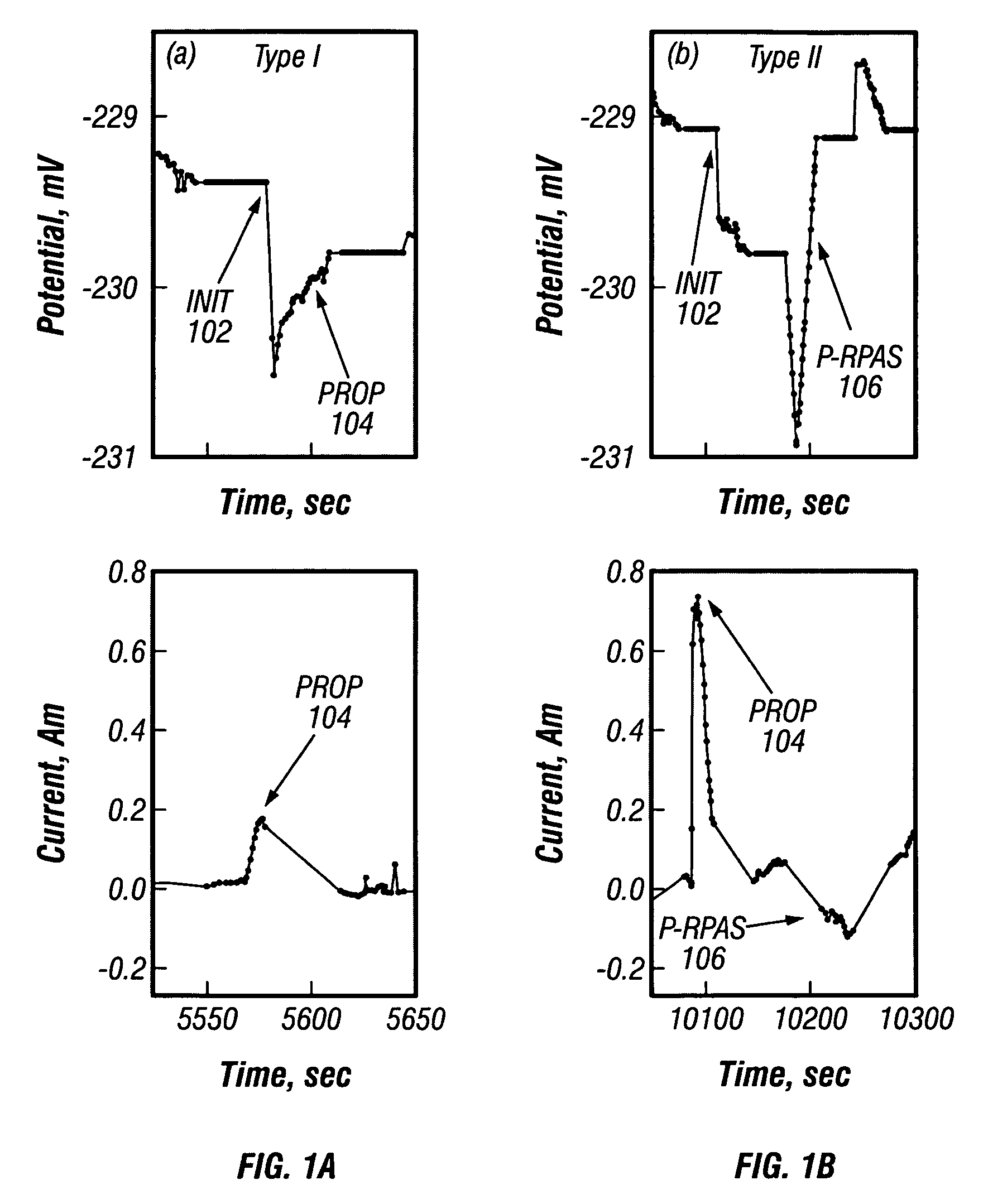Quantitative transient analysis of localized corrosion
a localized corrosion and transient analysis technology, applied in the field of electrochemical noise methods and systems, can solve the problems of loss of production, corrosion failure of localized corrosion equipment, and serious problems in the field of localized corrosion of equipment,
- Summary
- Abstract
- Description
- Claims
- Application Information
AI Technical Summary
Benefits of technology
Problems solved by technology
Method used
Image
Examples
Embodiment Construction
[0034]A method and apparatus have been discovered for the detection and characterization of the corrosion behavior in systems where localized corrosion predominates (in the form of pitting) and is quantitatively evaluated. The severity, frequency and time / space distribution of the localized events are determined from potential and current measurements recorded from the corroding systems. Localized Corrosion Monitoring (LCM) using the current and potential transient analysis methods provided in the present example are performed by the disclosed control and analysis methodology. The present example provides for continuous corrosion monitoring and real time analysis of the monitored data. Real-time system monitoring of the corrosion status of operating equipment is enabled. In laboratory investigations, the method and apparatus provide information on localized corrosion behavior that may be directly correlated with corrosion attacks.
[0035]The method and apparatus herein provide continu...
PUM
| Property | Measurement | Unit |
|---|---|---|
| time | aaaaa | aaaaa |
| current | aaaaa | aaaaa |
| surface area | aaaaa | aaaaa |
Abstract
Description
Claims
Application Information
 Login to View More
Login to View More - R&D
- Intellectual Property
- Life Sciences
- Materials
- Tech Scout
- Unparalleled Data Quality
- Higher Quality Content
- 60% Fewer Hallucinations
Browse by: Latest US Patents, China's latest patents, Technical Efficacy Thesaurus, Application Domain, Technology Topic, Popular Technical Reports.
© 2025 PatSnap. All rights reserved.Legal|Privacy policy|Modern Slavery Act Transparency Statement|Sitemap|About US| Contact US: help@patsnap.com



